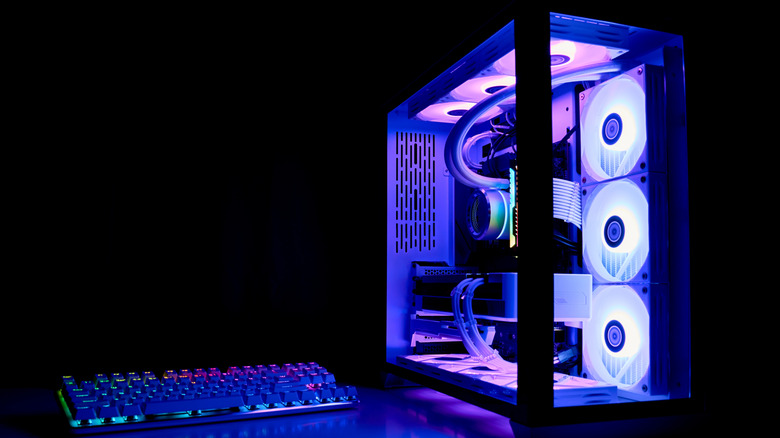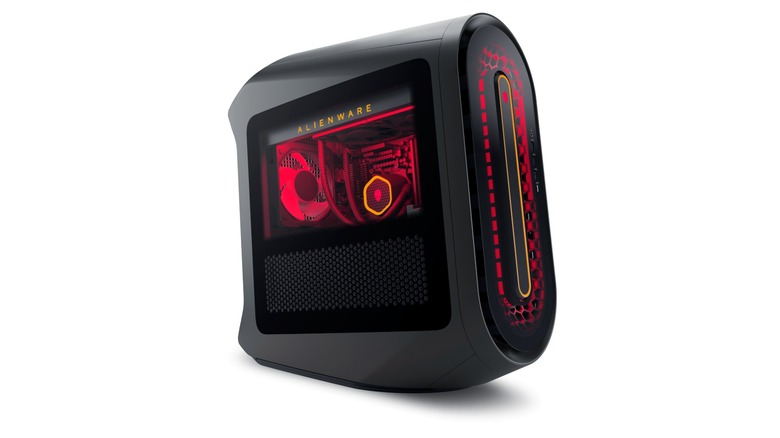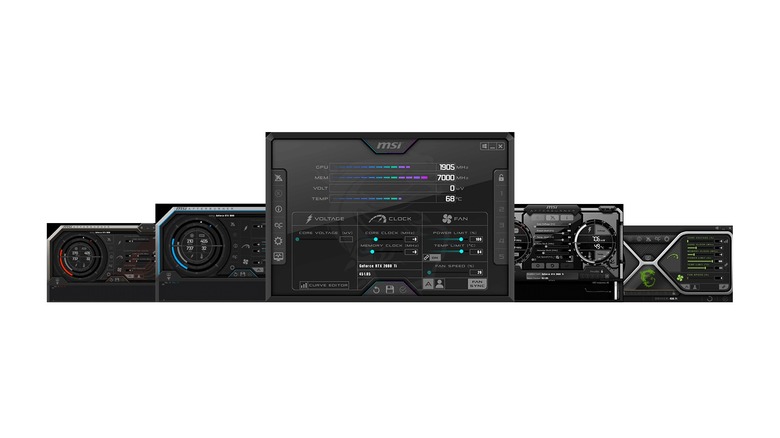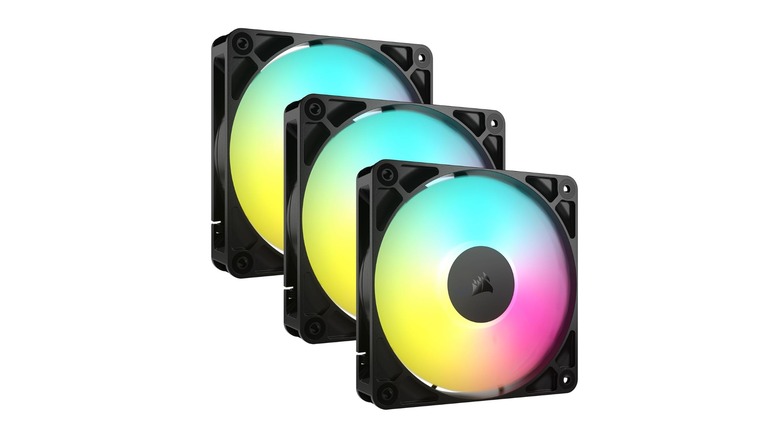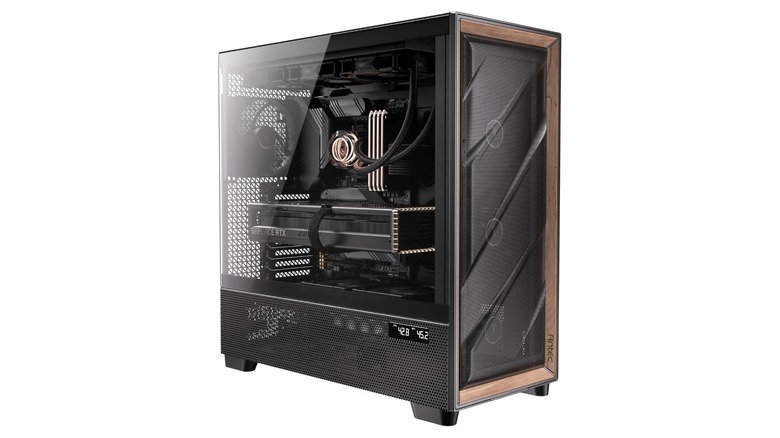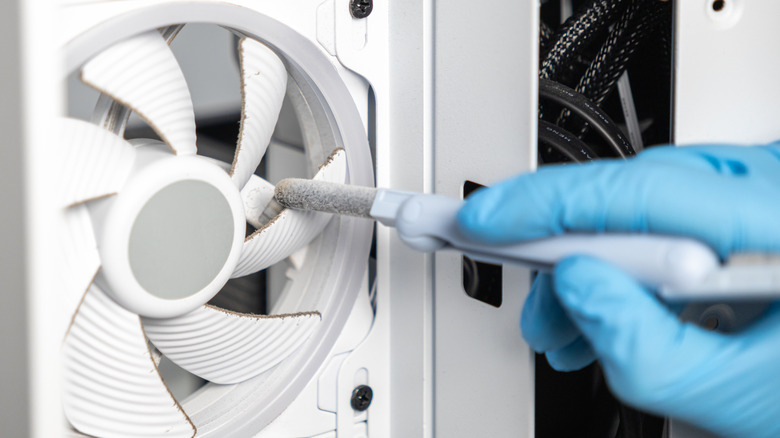5 Tips To Optimize The Airflow In Your Gaming PC (And Why It Matters)
We may receive a commission on purchases made from links.
One of the most important things to do to ensure your computer runs well is to keep temperatures low. If you run demanding software without proper cooling, excess heat could end up damaging your components. For example, if you find that your CPU is overheating often, the reason could be your computer's airflow. Unless your system is designed with low-powered components in mind, every computer will require fans to push and pull cool air through its internals.
While solving an issue like airflow might seem simple at first, poor planning and hardware incompatibilities can easily ruin your efforts. In some cases, even putting your computer through a wind tunnel won't do much to help you. Relying too much on pushing extra air through the computer can end up making it horribly loud, too, and the sound of the fans might be so intense as to distract you from gaming or working. A better solution to keep your PC cool and quiet is to understand how airflow works first, and then focus on how you can optimize heat dissipation in all its components.
Avoid poor gaming PC cases
Dell's Alienware Aurora R15 came under heavy criticism for a number of reasons, with the loudest complaints stemming from its case design. The outer shell has very little ventilation, making it exceptionally difficult for fans to pull in air. Other cases suffer from the same issue, especially those that have fans very close to the glass panels and only tiny slits available for air to move through. If that sounds like what you've built your own PC in, this issue might be reducing its performances.
That said, it's not hard to find a well-built case. Even some of the most ridiculous PC cases you could want might end up with pretty good airflow if there is enough room inside. If you're after a traditional, boxy design, the NZXT H5 Flow is a good example of what you should look for. It has a mesh front panel to allow air in while keeping dust out, and it offers multiple different entry and exit points for air to move through. It also includes a pair of fans of its own, so you don't have to choose between relying solely on your CPU and GPU coolers or buy some extra fans yourself.
Customize your fan speed curves
Making adjustments to the speed of your fans can have a strong impact on your computer's noise level and cooling ability. You can alter your fans' speed curves either through the BIOS settings or by using programs like MSI Afterburner. This allows you to make the fans spin faster when the temperature of your components increases, while making sure they'll stay quiet when you aren't doing anything more intense than scrolling through social media.
These days, most processors come with predefined thermal limits that try to automatically prevent serious damage. Most enthusiasts agree that keeping your components at about 90 degrees Celsius is safe, especially if they occasionally dip a little lower, since they were designed to operate at even higher temperatures. This means that you don't need to set all your fans at maximum speed all the time, even if that would certainly make your computer cooler. Unless you're fine using your PC exclusively with closed headphones blocking all external sounds, optimizing your airflow means balancing acoustics and cooling.
Add or swap case fans with better ones
If all your current fans running at full speed are unable to keep your system cool, an obvious solution would just be to buy new fans. Companies will often sell these in bundles, like Corsair's RS120 RGB Fans, which come in a pack of three for under $60, or even less for the non-RGB version. If you were careful with your case selection, you'll have enough space to add fans like these, which will allow you to push more air through your computer. That begs the question of where you should place all those fans, and what an important question that is. Much more than their number, the fans' placement is what really makes or breaks a PC's airflow.
When adding or replacing fans, it's important to keep pressure in mind. Positive pressure means that more air is brought into the computer than is pushed out of it, while negative pressure works the other way around. Positive pressure warms your components because fresh air spends too long in the case and becomes hot before leaving. Negative pressure, on the other hand, will cause air to be sucked in through any cracks available in the case, allowing for a greater amount of dust to end up inside your computer. You'll want to aim for a balance between the two, erring towards the side of positive pressure to prevent dust buildup.
Space the components inside your gaming PC
There isn't much you can do with good airflow if the air can't actually reach all the components. Poor cable management can block air from getting to your processor, and certain cases leave no room for a large GPU to get air from anywhere. Your power supply can also be subject to these problems, especially if its fan ends up facing a wall of cables or a hard surface. For the best airflow possible, you'll need to consider not only how you build your PC, but what to build it with, too.
If you don't know a lot about desktop PCs, you might be surprised to learn that you can use a mini-ITX motherboard in an ATX case. While there are upsides and downsides to this, one obvious positive is the additional room for airflow, which results in increased ventilation. Those already using a standard ATX build can take things a step further with an E-ATX case like the Antec Flux Pro, which lets you mount larger fans than usual. That said, you should be careful with your build and research each component before you buy it, since a bigger fan isn't always guaranteed to decrease your PC's temperatures.
Carefully clean your computer
Cleaning your computer is the most obvious way to optimize airflow, but it might also be the most overlooked. Regardless of how often you vacuum your home and where you keep your PC, it's only a matter of time before a layer of dust cakes everything inside it. This, of course, will prevent your components from cooling properly, as it reduces the amount of air being taken in by each fan. As much as mesh filters and positive pressure might help, sometimes you just have to pop your case open and give it a good cleaning.
There are plenty of ways to prevent and clean dust buildup in your PC tower. Opening up your case and carefully dusting it every now and then can go a long way, especially with the help of some compressed air and a microfiber cloth. You don't even need to take everything apart, as long as you can get to the main air pathways and clear them of any debris. If you make a habit of it, you'll never have to worry about dust harming your airflow ever again.
